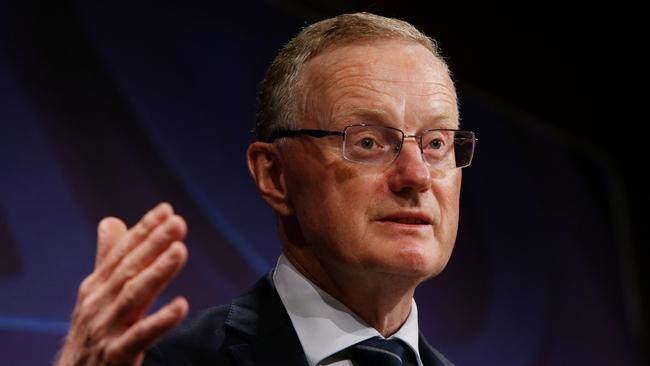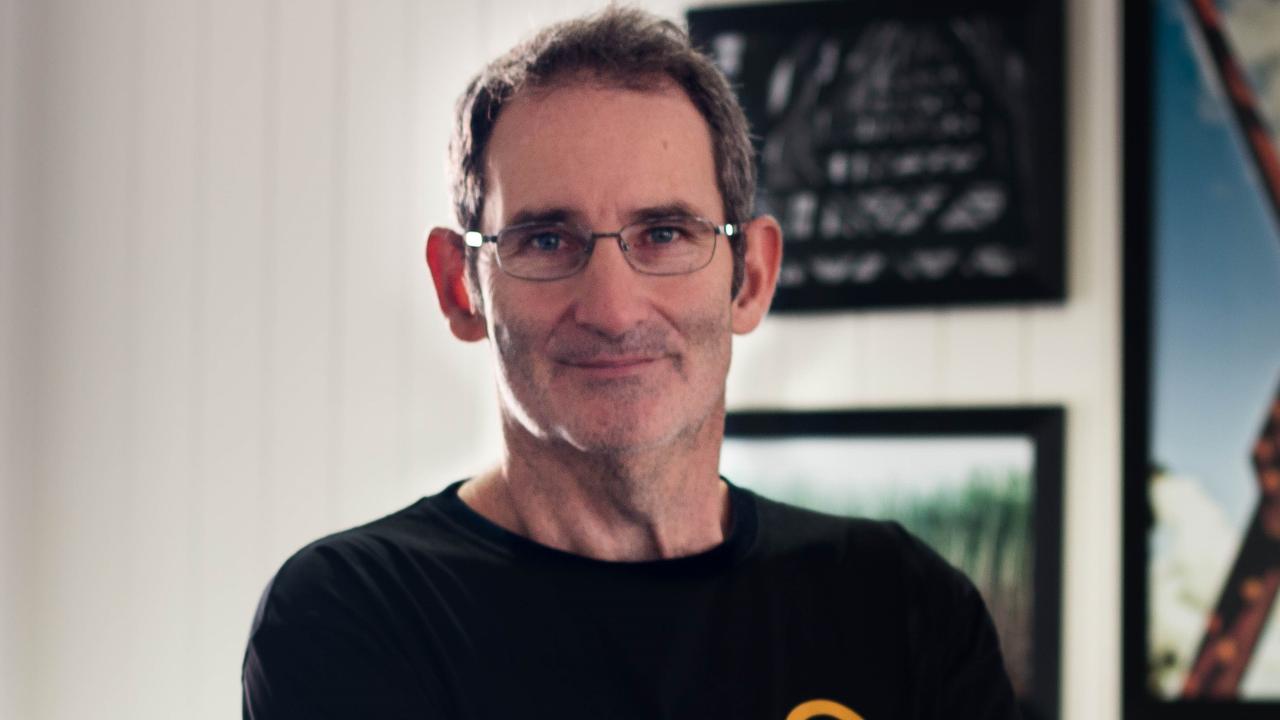RBA’s governor Philip Lowe knows the next move
Minutes from the Reserve Bank confirm RBA governor Philip Lowe knows exactly what he has to do next – lift the cash rate, most likely in June.

Business
Don't miss out on the headlines from Business. Followed categories will be added to My News.
In central banking, you’re generally in a pretty good place if your biggest challenge is figuring out what to do next.
Minutes from the Reserve Bank’s board meeting in April, released on Tuesday, confirmed that RBA governor Philip Lowe knows exactly what he has to do next – lift the cash rate, most likely in June, to help douse a spreading inflationary fire.
Gone are the days when Australia was a comfortable outlier, with its cash rate forever stuck at 0.1 per cent as the US, Canada, New Zealand and the UK pulled hard on their policy levers.
At its April board meeting, the RBA abandoned “patience” about the timing of its first rate increase since November 2010, loosening the link between wage growth and inflation.
The previous trigger was an inflation rate sustainably in the 2-3 per cent target range, pushed along by a faster rate of wages growth than in recent years.
However, with persistent supply-chain bottlenecks and the war in Ukraine pushing energy and food prices higher, RBA officials said that measures of underlying inflation in the March quarter were now expected to be above 3 per cent. Wages momentum was also building, although the rate was insufficient to lift inflation into the target range.
“These developments have brought forward the likely timing of the first increase in interest rates,” the minutes said.
“Over coming months, important additional evidence will be available on both inflation and the evolution of labour costs.
“Consistent with its announced framework, the board agreed that it would be appropriate to assess evidence and other incoming information as it sets policy to support full employment in Australia and inflation outcomes consistent with the target.”
In the past week, the Reserve Bank of New Zealand and the Bank of Canada have both taken dramatic action to curb inflationary expectations, hiking their policy rates by 50 basis points.
It was the RBNZ’s biggest adjustment in 22 years, wrong-footing 15 of 20 economists surveyed by Bloomberg who had expected a 25 basis-point increase.
RBNZ governor Adrian Orr clearly wants the inflation genie back in the bottle as soon as practicable.
The mantra is to go early, go hard or risk inflationary expectations becoming embedded in the economy, making a return to the status quo exponentially more difficult.
It’s a rapid turnaround from conditions in 2020 when deflation was the main risk.
Following its ‘least regrets’ policy framework, the RBNZ, like other central banks, smashed policy rates to near-zero, preferring to risk an outbreak of inflation rather than the horror of deflation.
“I thought (at the time) if we’re successful, then we are soon going to be tightening policy,” Orr said in an interview this week for the International Monetary Fund’s spring meetings.
“So I feel it’s great that nominal interest rates are rising again and we have positive inflation, but all of these one-off, additional shocks are exhausting.”
The RBNZ’s 50 basis-point hike lifted the official cash rate (OCR) to 1.5 per cent, with further increases expected.
Annual inflation, according to the central bank, was expected to peak at around 7 per cent in the first half of this year, with the market forecasting an OCR peak of about 3.5 per cent in 2023.
In the US, where inflation hit a 40-year high of nearly 8 per cent earlier this year, interest-rate futures contracts are pricing in a policy-rate range of 2.5-2.75 per cent by year’s end.
The Fed increased the target range by 25 basis points last month from 0-0.25 per cent to 0.25-0.5 per cent.
The minutes said that central banks in many advanced economies, including the US, had responded to higher inflation by increasing interest rates from historically low levels, and had signalled that further rises were likely. Bond yields had risen and expectations of future policy rates had increased.
While market pricing implied a swift increase in policy rates over the near term, RBA directors observed that expectations were for rates to peak at levels which were relatively low. Australia, however, is well behind in the cycle.
June is the consensus pick for the RBA’s first tightening in the new cycle, with the April minutes a final chance to leave the door slightly ajar for a hike in May given there is no scheduled communication from the central bank until its May board meeting.
The minutes repeated the post-meeting statement that the RBA would assess the looming inflation and labour costs data over the coming months.
While the wages data hits the market after the next RBA board meeting in May, the first quarter inflation figure is out on April 27.
CBA said in a note on Tuesday that inflation is likely to have accelerated, with headline CPI by 1.4 per cent or an annual rate of 4.3 per cent. “Given our expectation for a very strong print, the May board meeting should be considered ‘live’,” the bank’s head of Australian economics Gareth Aird said.
gluyasr@theaustralian.com.au
Twitter: @Gluyasr
Originally published as RBA’s governor Philip Lowe knows the next move



